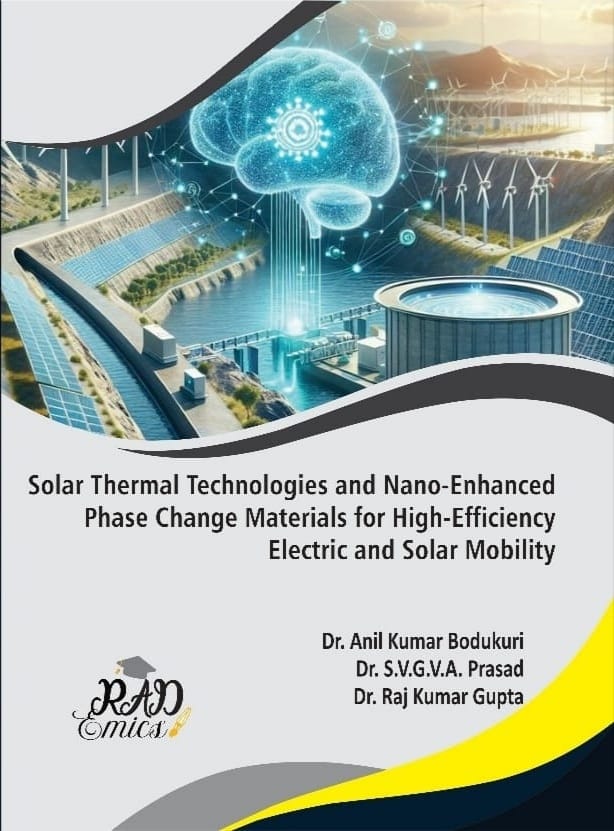
Abstract
The advancement of electric and solar vehicles demands efficient and sustainable thermal management solutions to ensure optimal battery performance, safety, and longevity. This chapter presents a comprehensive exploration of hybrid thermal management systems (HTMS) employing nano-enhanced phase change materials (nano-PCMs) as a next-generation strategy for effective battery cooling. Nano-PCMs combine the latent heat storage capability of traditional PCMs with the superior thermal conductivity of nanomaterials, thereby overcoming the limitations of conventional cooling systems. The integration of passive and active thermal control methods within HTMS is examined, highlighting improved temperature uniformity, accelerated heat dissipation, and enhanced energy efficiency under varying operational conditions. Emphasis is placed on material synthesis, thermophysical characterization, and system-level modeling of nano-PCM-based cooling architectures tailored for electric and solar-powered vehicle platforms. The role of nanomaterials such as graphene, carbon nanotubes, and metal oxides in augmenting the thermal performance of PCMs is analyzed, along with techno-economic considerations and real-time testing data. The chapter also addresses design challenges, environmental impacts, and future research directions in scaling nano-PCM technologies for widespread vehicular deployment. By bridging material innovation with system integration, hybrid thermal management systems present a transformative pathway for advancing battery reliability and sustainability in modern transportation.
Introduction
The electrification of the transportation sector is advancing rapidly, driven by environmental concerns, energy security, and the global push toward carbon neutrality [1]. Electric and solar vehicles, as sustainable alternatives to fossil fuel-powered transportation, rely heavily on high-performance battery systems [2]. Thethermal regulation of these batteries remains a critical challenge. Inefficient thermal management can lead to overheating, thermal runaway, reduced energy efficiency, and decreased battery lifespan [3]. Consequently, maintaining optimal temperature conditions is essential to ensuring operational safety, performance stability, and long-term durability [4]. Traditional cooling methods, including air and liquid cooling, often fail to respond effectively under fluctuating driving conditions or high-power demand, prompting the need for more robust and intelligent thermal control strategies tailored to the dynamic nature of vehicular environments [5].
Hybrid thermal management systems (HTMS) offer a strategic solution by combining active and passive cooling mechanisms [6]. While active cooling systems use forced convection or circulation of coolants to extract heat, passive systems rely on materials with intrinsic thermal storage capabilities [7]. The integration of both methods enables real-time adaptability, energy efficiency, and spatial uniformity in heat dissipation [8]. Passive elements, particularly phase change materials (PCMs), have shown promise due to their ability to absorb large quantities of heat during phase transition. The conventional PCMs suffer from low thermal conductivity, limiting their application in high-performance scenarios where rapid heat absorption and dissipation are necessary [9]. This limitation has led to the evolution of nano-enhanced phase change materials (nano-PCMs), which incorporate thermally conductive nanomaterials to overcome this barrier [10].